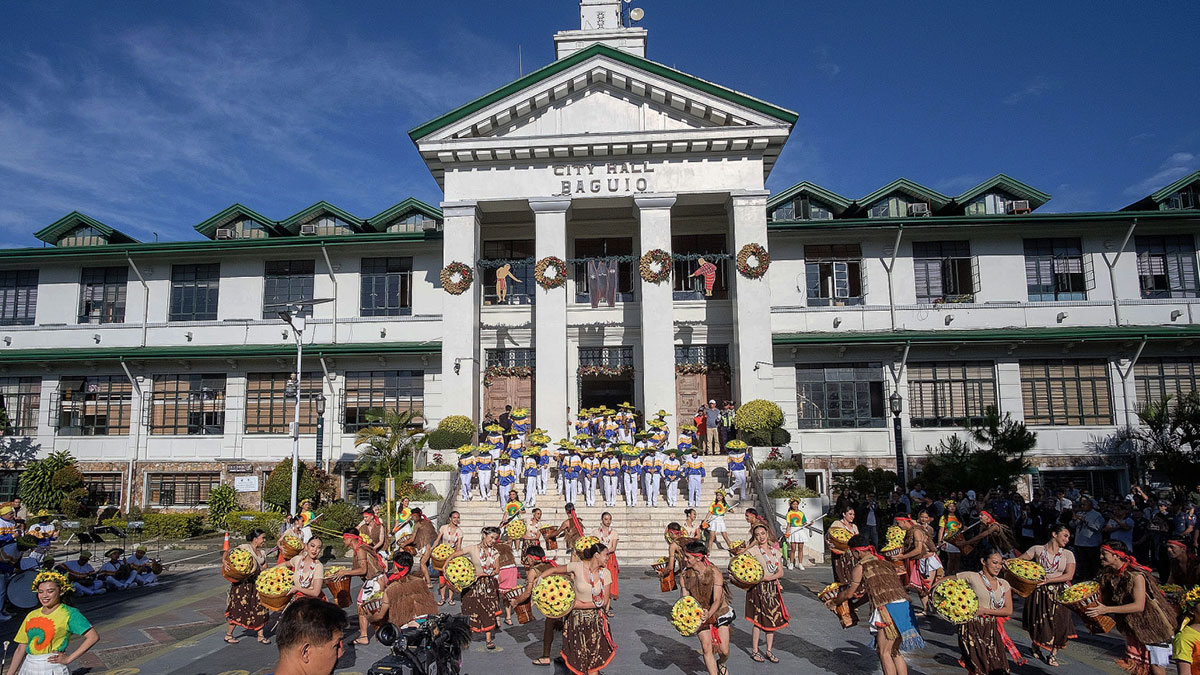
PANAGBENGA LAUNCH Cordillera dancers take part in the launching Monday of the 2025 Panagbenga, or the Baguio Flower Festival, at the Baguio City Hall, as government experts began studying the best way to reduce traffic jams during the monthlong event in February. —Neil Clark Ongchangco
BAGUIO CITY, Philippines — Bumper-to-bumper traffic in this city, particularly during holidays and regular weekends, appears to have influenced travel behavior, Mayor Benjamin Magalong said on Monday.
Citing bus records, Magalong noted that more visitors last Christmas and New Year opted for mass transportation to travel to Baguio and experience the city’s chilly weather, which dipped to 14.4 degrees Celsius at 5 a.m. early this week.
“For example, Victory Liner made 800 round trips a day during the December holiday weeks of 2023. [During the yuletide holidays in the last weeks of December 2024], the company made 900 trips a day … It was the same situation for Solid North [a Pangasinan-based bus liner]. They recorded an increase in trips,” he said at the sidelines of this year’s Panagbenga launching ceremony at City Hall.
READ: Baguio’s youths brim with ideas to future-proof the city
Vehicle reduction
Residents would always brace for heavy traffic during the annual monthlong Panagbenga, the Baguio Flower Festival, which begins on Feb. 1, highlighted by the crowd-pleasing Grand Street Dancing Parade on Feb. 22, followed on Feb. 23 by the Grand Float Parade that features movie and television celebrities.
However, the increase in the number of commuting tourists “was still not enough to significantly reduce the number of private vehicles driving through our roads,” Magalong said.
But the new travel preference meant visitors have taken heed of a Baguio campaign for tourists to leave their cars behind when heading to this city, he said.
Magalong said the city tourism office was still collating data on tourism arrivals in 2024. But in 2023, hotels, other accommodations, and food establishments booked or served 1.31 million visitors.
‘Swift drive’
In earlier interviews, Baguio Tourism Supervising Officer Aloysius Mapalo said the “swift drive” from Manila to Baguio through the Tarlac-Pangasinan-La Union Expressway (TPLEx) meant a Baguio trip was no longer a seasonal activity, with bus travel time cut to three to four hours from six hours.
Even on working weekdays when there used to be fewer tourists, turtle-paced vehicular flow and the occasional gridlock plagued city roads leading to downtown Baguio and to popular destinations like Mines View Park, Botanical Garden, and recently the ecological park atop Lourdes Grotto.
As many as 53,000 to 60,000 Baguio vehicles are on city streets at any given moment and share road space with 25,000 driving visitors, a transport survey conducted last year by Metro Pacific Tollways Corp. showed.
The tollway giant was given an original proponent status by the city government for its unsolicited P2.5-billion pitch to put up a “smart mobility” system, which would use artificial intelligence to track and regulate mass transport services, and monitor and manage real-time traffic flow along busy Baguio streets.
Magalong said the survey indicated that tourists were not the main drivers of Baguio congestion.
Last year, the toll firm floated the idea of charging motorists a congestion fee should they head for downtown Baguio during peak traffic hours. The suggestion drew backlash from residents.

